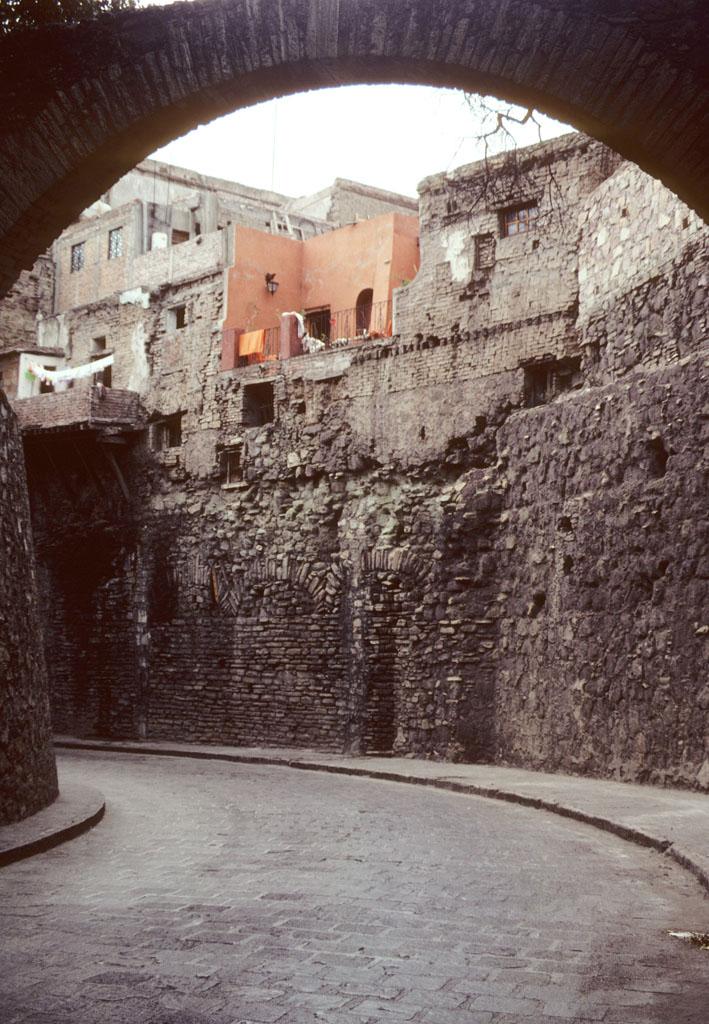Guanajuato's subterranean roads
Homes rise from the stone foundations of a sunken road. The photo is taken from under a stone archway, looking out. Guanajuato is a large city in the central highlands of Mexico. It was an important colonial city because of the area's large silver deposits. Silver continues to be a major export, while tourism and industry round out the balance of the economy. Because it was an important colonial site, the city boasts of lavish colonial architecture and a historic city center that is recognized by UNESCO for its cultural heritage. The two main roads entering and leaving Guanajuato are actually underground. The roads follow the course of an old river, which has since been dammed. The rest of the city rises high into the hills by way of narrow steep alleys. To explore the city, one must investigate on foot. Guanajuato is also famous for one of the most important battles in the early push for independence. In 1810, Miguel Hidalgo led his ragtag peasant army to the rich city of Guanajuato. The undermanned Spanish garrison was routed and the surviving soldiers and many wealth citizens barricaded themselves in the granary. The insurgent army then lit the granary on fire, killing all the occupants. Ironically, the granary fire at Guanajuato may have actually slowed down the independence movement because many moderate Mexicans feared the violent insurgents more than the corrupt colonial officials.

Creative Commons BY-NC-SA
This item has a Creative Commons license for re-use. This Creative Commons BY-NC-SA license means that you may use, remix, tweak, and build upon the work for non-commerical purposes as long as you credit the original creator and as long as you license your new creation using the same license. For more information about Creative Commons licensing and a link to the license, see full details at https://creativecommons.org/licenses/by-nc-sa/4.0/.